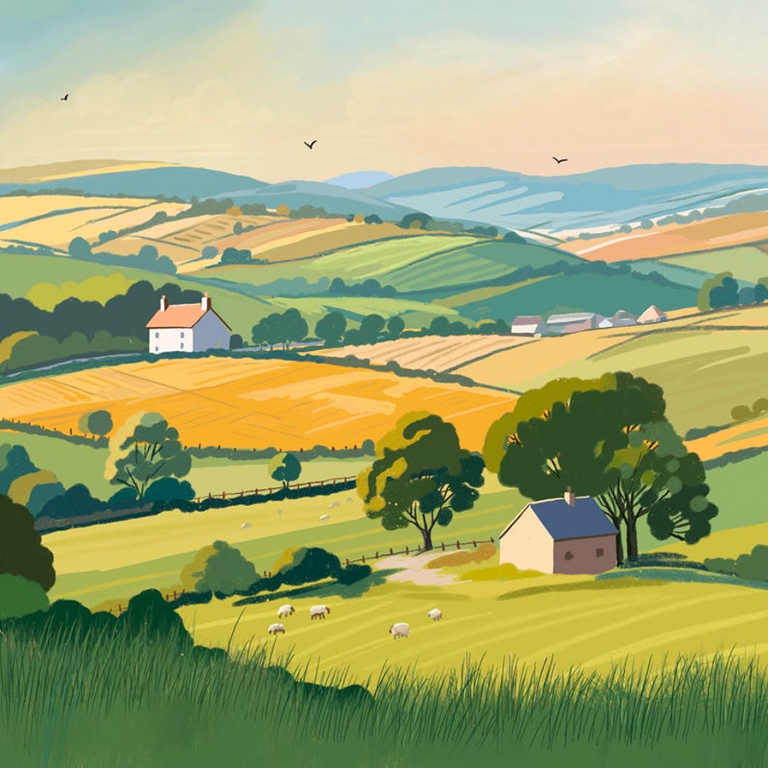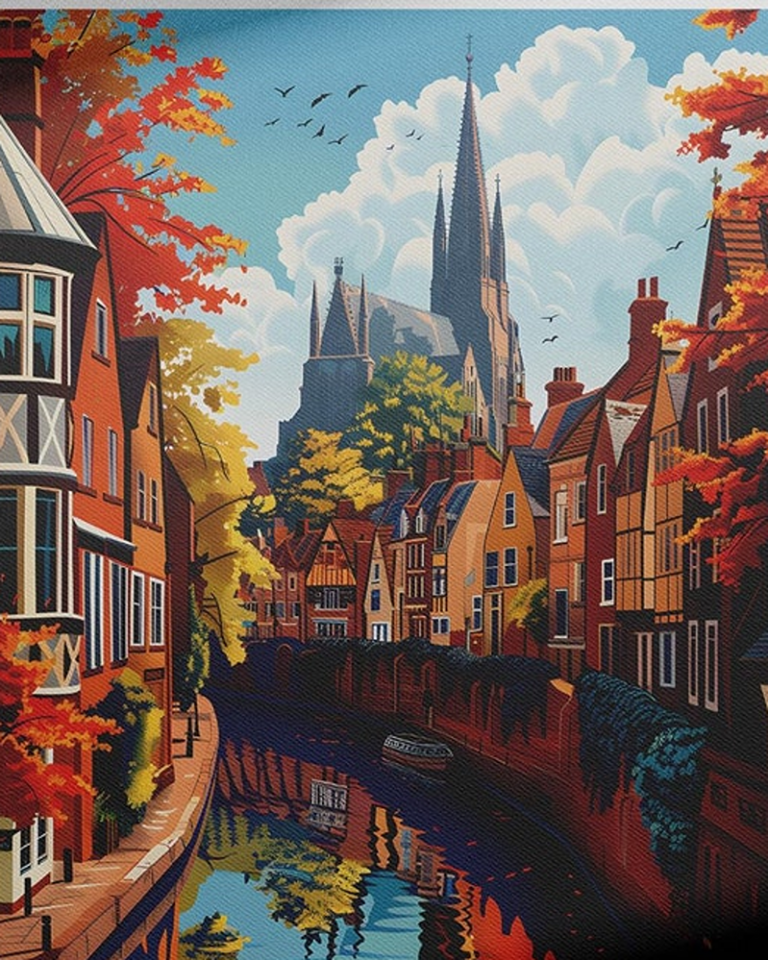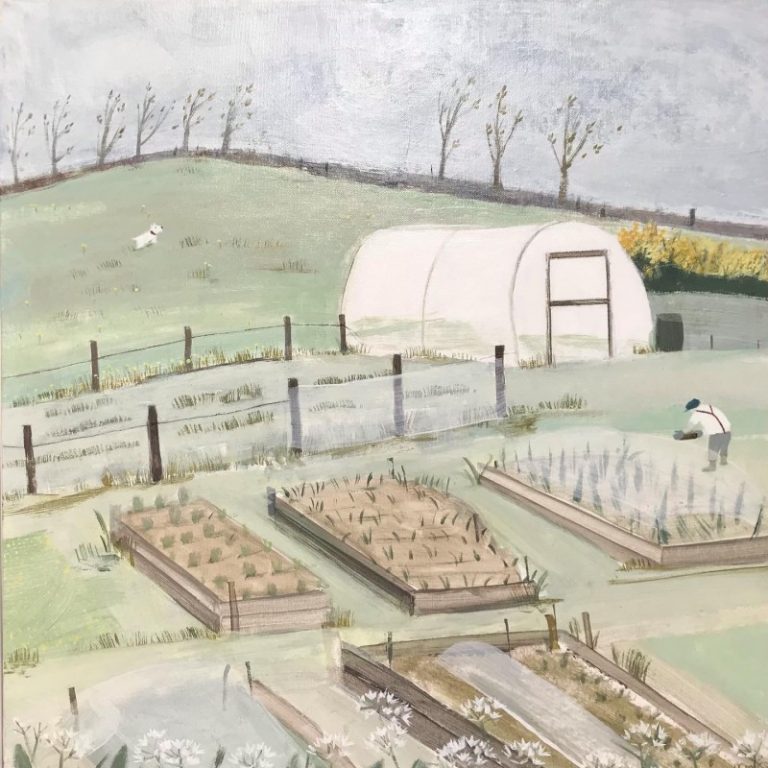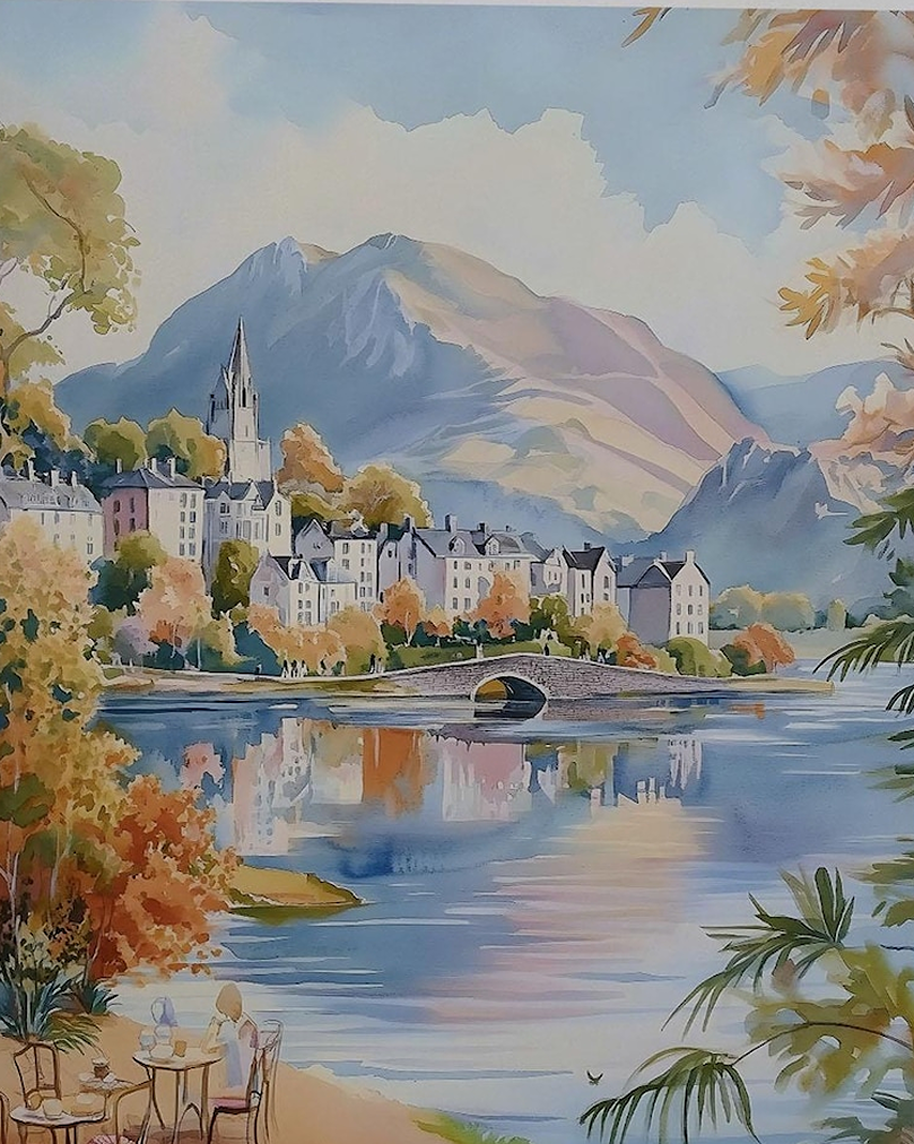
Buttermere, Pastel Pine
The northwest county of Cumbria has more to offer than rain and rolling green hills (though you’ll find plenty of both). From the peaks and lakes that inspired famous poets to small towns filled with friendly faces and strange old tales, Cumbria shapes its own story every day.
Around every corner you’ll spot sheep grazing, stone cottages, and pubs that feel like they belong in another century. The weather can change without warning, but that just adds to Cumbria’s wild charm. People here hang tight to their local traditions and tales, proud of an identity shaped by the fells, farms, and a good bit of humour. Get ready for some surprises, because there’s always more to Cumbria than meets the eye.
When you head out for a walk in the countryside, always stick to the Countryside Code to help protect wildlife (and dogs). By the sea, take a look at tide times and check any warning flags before heading out. For tips on looking after your dog near the beach, have a read of our guide on seaside safety for dogs
Wainwright’s Coast to Coast Walk
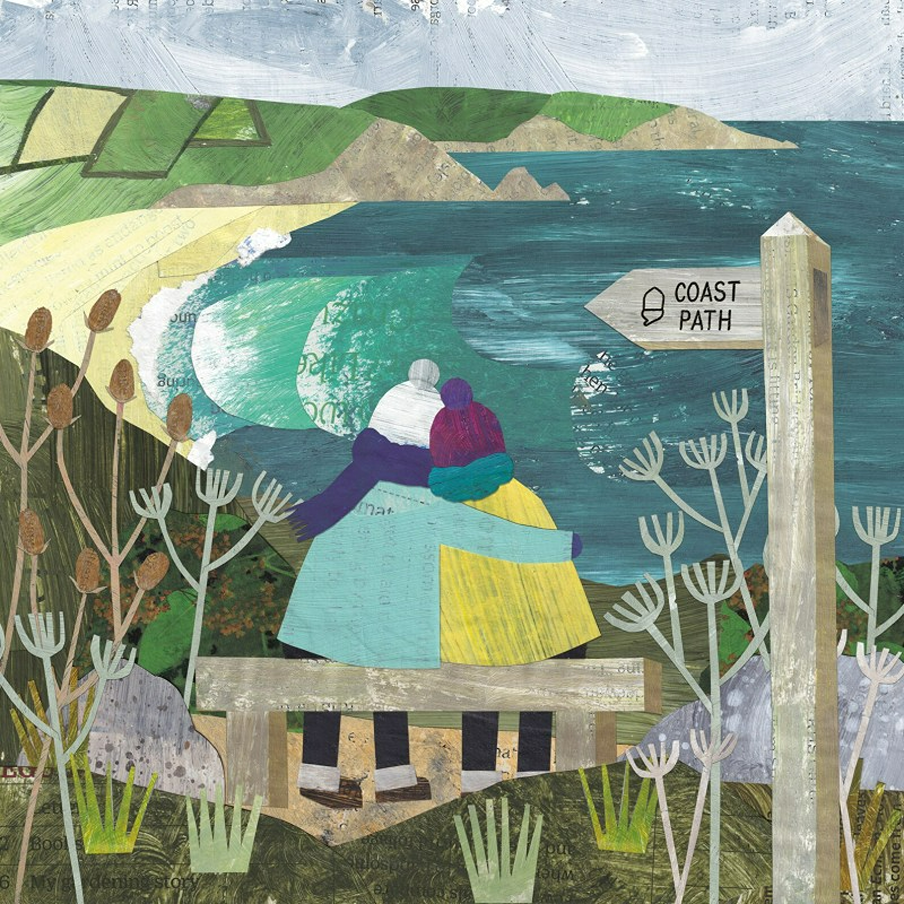
Cumbria is the starting line for one of Britain’s best-loved walking traditions: Wainwright’s Coast to Coast. Every spring and summer, St Bees, a quiet spot on the Irish Sea, sees walkers from all over the world touch the sand and dip their boots before heading east.
Created by Alfred Wainwright in the 1970s, the Coast to Coast trek covers about 192 miles, winding through the Lake District, Yorkshire Dales, and across to the North Sea at Robin Hood’s Bay. The rules are simple: start in St Bees, carry your own kit, and touch the opposite sea at the end.
What makes it special? The spirit of the thing. Along the way, walkers cross some of Cumbria’s most dramatic peaks—Red Pike, Honister Pass, and the wild ridge above Ennerdale. Sheep graze on open hillsides, cloud shadows race across the land, and every day ends in a small village full of muddy boots and tired smiles.
Walking in Cumbria isn’t just a hobby—it’s a tradition that links locals and visitors alike. Even outside the Coast to Coast, classic routes like the Bob Graham Round (a 24-hour fell running challenge) and regular Lakeland festivals pull in crowds eager to test themselves. Each path in the county feels worn by stories and footsteps that stretch back generations, creating a real sense that you’re part of something timeless.
Walkers might grumble about the rain or the hills, but they keep coming back. Maybe it’s the scenery, maybe just that deep sense of achievement after reaching a summit with nothing but sheep for company. In Cumbria, the walks are legendary, but so is the welcome at the journey’s end.
The Lake District National park

The Lake District sits at the heart of Cumbria and shapes almost every part of life here. It pulls in millions of visitors each year, all chasing fresh air and big views. Some show up for the famous trails, like Wainwright’s Coast to Coast, which starts at St Bees and sweeps all the way east. Others come for simple pleasures, like wandering beside Windermere or hiking up to Helvellyn’s ridge for sunrise.
It’s never just about the distance or the destination. Walking in the Lakes means plunging into endless shades of green, picking your way across fields traced by dry stone walls, and facing weather that likes to keep you on your toes. One moment, the sun sits on your shoulder; ten minutes later, you’re ducking into a tree to escape sideways rain. Locals call it “four seasons in a day,” and they’re not joking.
The weather shapes the mood, from misty mornings where fells disappear in cloud to crisp afternoons of golden light. Writers and poets have chased this shifting beauty for centuries, pouring it into words and art. For many, the lakes aren’t just scenery. They’re a living part of the story, luring folks outdoors and teaching patience, grit, and humour with every soggy boot.
Castlerigg Ancient Stone Circle
Tucked on a windswept plateau above Keswick, Castlerigg Stone Circle is older than Stonehenge and almost as mysterious. Step into the circle and you’ll feel the pull of something old and hard to explain. With its 38 chunked stones carved by glacial hands, Castlerigg isn’t just an artefact. It gathers storms and quiet in equal measure, always changing with the weather and the light.
People have wandered to these stones for at least 4,000 years. Some say the site was for rituals or marking the stars, but no one really knows. What’s certain is that the circle still draws crowds—walkers catching their breath, families picnicking, and plenty just standing quiet, trying to picture the lives of those who built it.
There’s a kind of hush about Castlerigg, even when the wind bites or the clouds drop. You can see the fells all around: Blencathra, Helvellyn, and Skiddaw keep watch over the ancient site. Each season, the scenes shift from bright green fields to snow-swept ridges, making the stones seem timeless. The landscape and the legends are stitched together, and every visit adds a new layer to the myth.
Six Sheep for Every Person!

It’s hard to imagine the Lake District without sheep, and out-of-season the area has six times more of them, than human residents! Sheep blend into the hillsides like tufted clouds, dotted across every field, path, and valley.
The most famous of all is the Herdwick sheep, tough, shaggy, and proud-looking. Their white faces and grey fleeces always stand out. However, farmers have a constant battle due to rainy weather, to keep them free from foot problems, due to the grass never really drying out.
Herdwicks are part of the Lake District’s identity. The hills and pastures you see today only look the way they do because of the sheep. Here’s how the animals leave their mark on the scenery:
- Short-cropped grass: Herdwicks munch down the wildflowers and young shoots, keeping the grass close and neat. That’s how those smooth, green slopes stay so open, making the whole area feel tidy yet ancient.
- Stone-walled fields: People built classic Lake District dry stone walls to keep the flocks in check. These walls snake up the hills and shape the patchwork of the landscape.
- Farming traditions: Generations of shepherds walk the same paths, swap stories at local pubs, and keep old ways alive. Lambing season fills fields with new life each spring, adding to the cycle.
- Resilient herds: Herdwicks are hardy. They can cope with rain, wind, and tough winters. Their ability to thrive in the hills means farms can survive on some of the roughest land, and the views stay unspoiled by overgrowth or scrub.
Sheep don’t just graze here, they help draw the lines of the landscape. Their presence keeps the hills green, the stone walls strong, and the whole region tied to a history that stretches back hundreds of years. The next time you spot a woolly face peering at you from the bracken, know you’re seeing one of the quiet guardians of the Lake District’s natural beauty.
Sheep that are soaked from rain, especially if they are pregnant, can sometimes end up flat on their backs and get stuck. If you come across one like this and can’t see the farmer right away, walk over calmly and take hold of some wool. Gently but firmly help the sheep back onto its feet.
Stay nearby until the water has drained off a bit and the sheep looks ready to move. Chances are, it will make a dash without a backward glance, but that small effort could be the difference between life and death for the sheep.
Read our post on lots of ways to help sheep!
Market Towns, Coast, and Border Stories
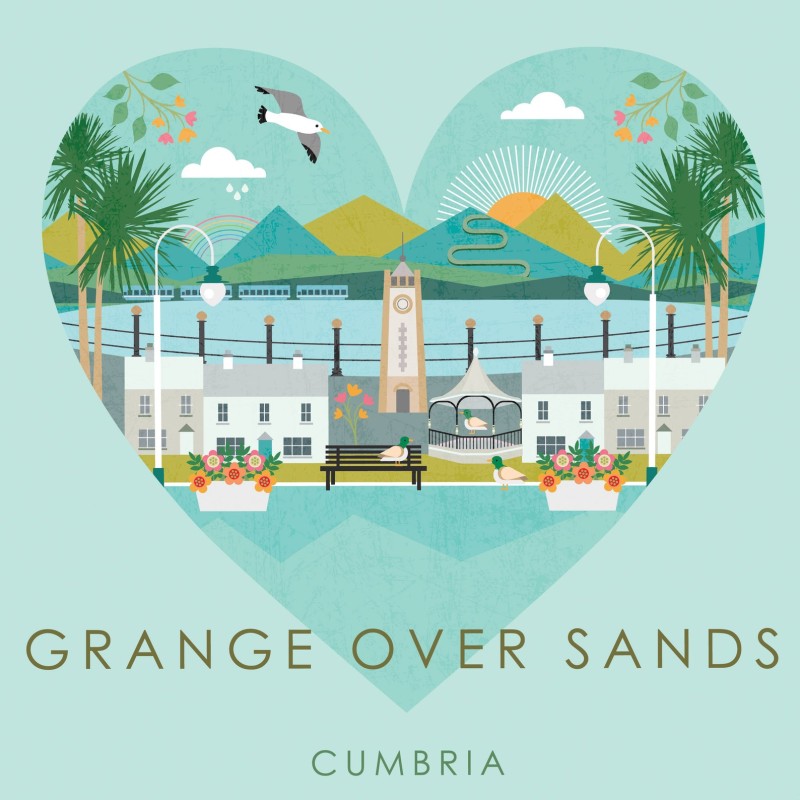
They say you need to understand the towns to understand the county. Each one has carved out its own identity, thanks to history, accidents of geography, and a bit of northern stubbornness.
- Carlisle (Cumbria’s only city) stands guard at the north, its walls a scar from centuries of border clashes with Scotland. You’ll spot echoes of this in the old citadel, the castle, and in a quiet defiance that runs through local talk. The city has faced wild river floods, with waters surging through streets and making national headlines. Still, Carlisle bounces back, proud of its borderland past.
- Penrith has always felt a bit different—closer to Scotland than the rest of Cumbria, with its red sandstone buildings and busy markets. Stop by the ruins of Penrith Castle or wander the town centre for a flavour of its history as a northern crossroads.
- Maryport huddles by the Irish Sea, where the wind never rests. This small port has a Roman origin, old shipyards, and hints of its seafaring heyday. Today, you can visit the harbour or the Roman museum.
- St Bees may seem quiet today, but it’s something of a legend. Across Britain, hikers know St Bees as the starting point of the celebrated Coast to Coast walk—a 192-mile trek to Robin Hood’s Bay in Yorkshire. The sandy beaches and sandstone cliffs here are a taste of the journey’s wild promise.
- Grange-over-Sands perches on the edge of Morecambe Bay, with a genteel promenade and faded Victorian hotels, almost like a resort paused in time. The mudflats draw hundreds of wading birds.
The “over-sands” part of the name isn’t just for show. Back in the 1800s, the local vicar got fed up because his letters kept ending up in Grange, Borrowdale, up near Keswick instead of in his own village. The little change in the address made Grange-over-Sands stand out.
Grange-Over-Sands looks out over Morecambe Bay, which has quicksand, which can be dangerous. Always pay attention to warning signs to keep yourself, children and pets safe.
Industrial Edges and Unexpected Facts
Head west and you’ll find echoes of hard work and invention. The coastline is dotted with towns that once bustled with miners, shipbuilders, and workers from every trade.
- Whitehaven was a powerhouse of coal and shipbuilding in the 18th and 19th centuries. It even had a street layout credited with influencing New York City’s grid. Old mine shafts criss-cross beneath town, and you can still trace the lines of terraced streets where workers lived.
- Workington always felt practical and busy, known for its ironworks, steel mills, and more football than poetry. You can sense the legacy in the local accent and in the statues honouring workers, not just lords.
- Barrow-in-Furness might win the prize for most unusual geography. It’s England’s longest cul-de-sac, stuck at the tip of a long peninsula. Submarines and ships have been built here, for over 100 years.
- Walney Island sits just off Barrow, linked by a single bridge. Known for its sand dunes, rare plants, birds and natterjack toads, dogs are not permitted near nature reserves, due to ground-nesting birds and seals). Again this sits on Morecambe Bay, so pay attention to warning signs.
- Sellafield stands apart as a reminder of the nuclear age. Once the site of Calder Hall, the world’s first commercial nuclear power station, the site’s story is a reminder of the changing world. Sellafield’s presence casts a long shadow, read why England does not need nuclear power.
- Dalton-in-Furness became known far beyond Cumbria in recent years for the South Lakes Safari Zoo. The zoo drew visitors and criticism, closing after investigations into animal welfare. Many creatures were rehomed, but some had to be put to sleep. Read more on how to conserve animals, without zoos.
Culture, Comedy, and Wordsworth
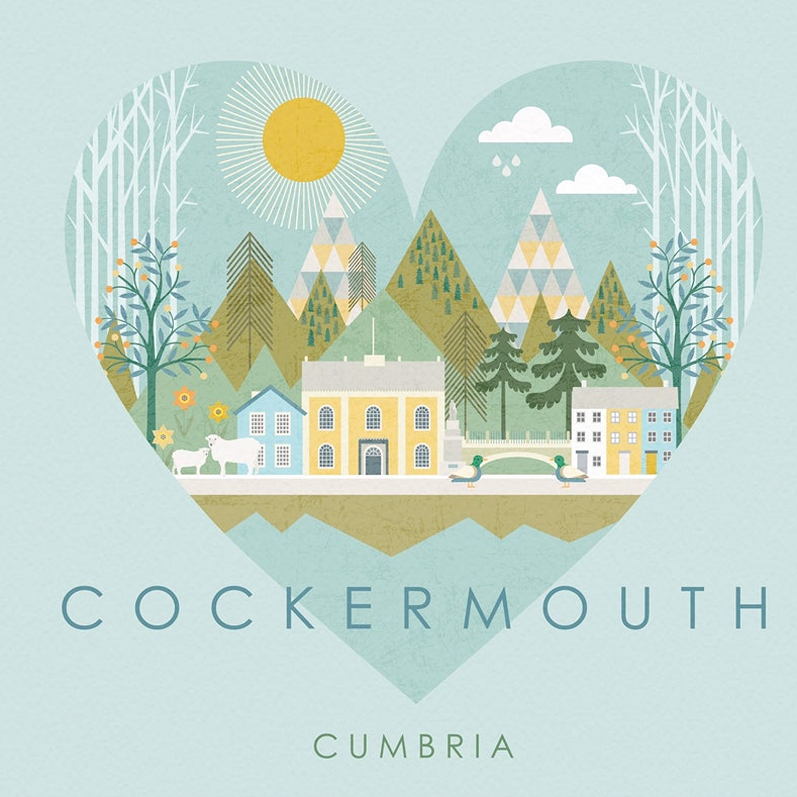
Not all of Cumbria’s towns are shaped by mud and sweat. Some run deep with cultural stories that reach far beyond the fells.
- Cockermouth is proud of its famous son: William Wordsworth. The town looks after his birthplace, a Georgian house filled with echoes of poetry (and his sister Dorothy’s notebooks). The streets celebrate their literary roots through quiet plaques and bookish corners.
- Ulverston goes for laughs thanks to Stan Laurel, half of the comic duo Laurel and Hardy. The Laurel and Hardy Museum offers photos, hats, and endless film reels. The annual festival sees people in bowler hats and bow ties, adding a touch of fun to this solid market town.
- Dalton-in-Furness has its own claim to fame with Margaret Fell. The widowed daughter of a judge in Ulverston (who lived at Swarthmoor Hall in Ulverston), she married George Fox (founder of the Quakers) and they spent many years apart, as usually one or the other of them were imprisoned for their peaceful beliefs, which upset the established church.
Cumbria’s towns run the full range—from comic giants to quiet reformers, border castles to nuclear frontiers. Each town, with its own quirks and history, adds a unique patch to Cumbria’s wild, windswept quilt.
Sticky Toffee Pudding (born in Cumbria!)

Vegan sticky toffee pudding, Rainbow Nourishments
Sticky toffee pudding (apparently the world’s favourite pudding) was created in the 1970s, in the village of Cartmel, not far from the southern lakes. This dessert (called ‘steamed date pudding’ in Australia) is a hybrid of Lancashire bread pudding and imported Canadian maple syrup (due to Whitehaven having been England’s third largest harbour – smuggling dates, sugar, rum and coffee to our shores!
Before cooking, read up on food safety for people and pets (keep this dessert away from animal friends, due to dried fruits and spices).
Bring Your Brolly, Raincoat & Wellies!

Ask anyone who’s spent time in the Lake District—rain is nearly as famous as the views. It falls in sheets, drizzles, or comes in sideways on gusty days. Some corners might see over 200 days of rain each year. The clouds rush in, hills disappear in greyness, puddles appear out of nowhere, and muddy boots are never out of style.
People learn to roll with it. A waterproof jacket and natural rubber wellies almost count as part of the dress code. Cafés fill up fast when the heavens open, with locals and tourists alike nursing hot cups of tea until the skies clear.
Blunt Umbrellas are built to last for England’s wild weather, and include free repairs for 2 years. They were invented by an engineer who noticed that most umbrellas are just ‘rags on sticks’.
His umbrellas last until you lose them, with a fully-tensioned design that doesn’t poke your eyes! They won’t (usually) turn inside out in the wind. If they do, just flip them back!
Yet the rain fuels what makes the Lakes magical. It fills the tarns, sets rivers running, and keeps the grass and woods green and lush. Every thick moss carpet, spreading tree, and rolling pasture owes something to the steady drizzle. For many, that ever-changing weather is part of the charm—no two days look or feel the same.
Rain shapes more than just scenery. It shows up in local stories, paintings, and even jokes. “If you can see the hills, it’s about to rain—if you can’t, it’s already raining,” is the sort of wisdom heard at every pub. And when the clouds finally lift, the glint of light on wet stone and the steam rising off the fells feel a bit like a reward.
If caught in a thunderstorm, keep a safe distance from trees and metal objects (umbrellas, golf clubs, motorbikes, wheelchairs, tent poles). Stay inside cars (fabric tops could catch fire, if struck).
If exposed, squat close to the ground with hands on knees, and tuck head between them, touching as little of the ground with your body (don’t lie down). If your hand stands on end, drop to the above position.
A Cumbrian Bank to Help the Planet

If you live in Cumbria, you could swap your bank account to The Cumberland that puts the planet and people first. It has regional branches and an online account, and uses profits to fund environmental and community projects (it does not invest in fossil fuels).
Choose from a Day2Day Account or one for young apprentices. It also offers ‘green mortgages’ with discounts for energy-efficient homes. And also supports nature reserves, community gardens, and rural charities that restore rivers, plant trees, and make wild spaces safe for wildlife.
Books on Exploring the Rainy Lake District
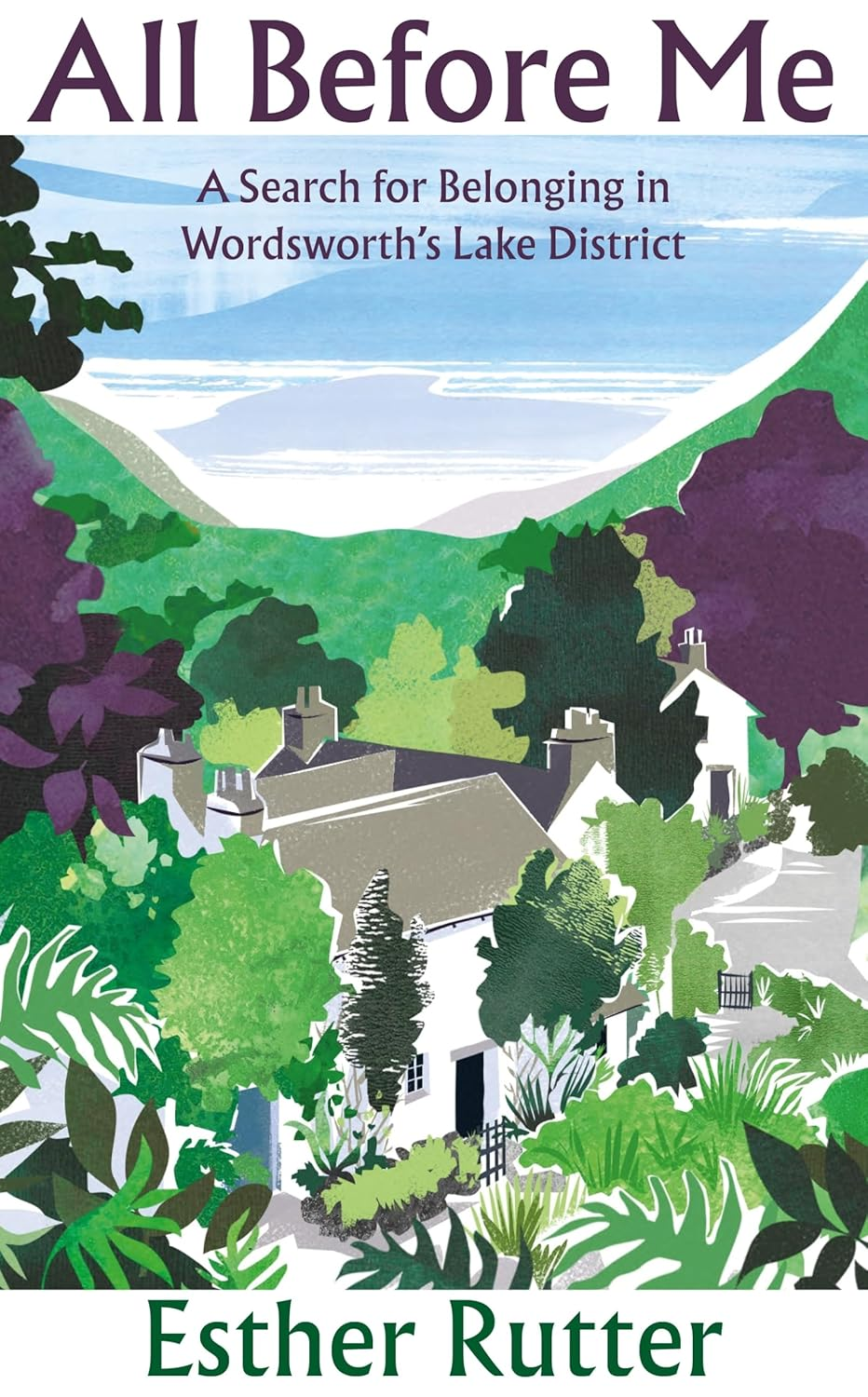
All Before Me is a writer’s account of how her recovery from a mental breakdown (while teaching English in Japan) led her to leave for the Lake District, to live and work at Dove Cottage, the home of William Wordsworth and his sister Dorothy.
Still in her early 20s, the beauty of the landscape and the legacy of the literary duo led her back to herself, in a place that felt like home.
36 Islands by poet Robert Twigger, who decides to visit all the islands (some no more than rocks, others perfect for a night of wild camping). Inspired by Wainwright and Wordsworth, he journeys beyond the tourists and busy roads, to islands both real and remembered.
Lost in the Lakes is the tale of travel writer Tom, who decides to explore undiscovered peaks, valleys and lakes, stopping off at a cosy inn or two along the way.
From Penrith and back, he finds why the dramatic scenery attracts so many visitors, in a landscape that has inspired Romantic poets. He even goes for a (chilly) dip in Derwentwater.
When the wind comes you just lie flat and wait. You could quite easily get blown off the edge. It’s a sheer drop. You shouldn’t even attempt to stand up in a storm.
The wind. It’s atrocious. If you see it coming, you should lie down’.
Conclusion
Cumbria never runs out of ways to draw you in. From rough fells to laughter in old stone pubs, the county gives you more than scenic walks and stories for rainy days. Its strong

